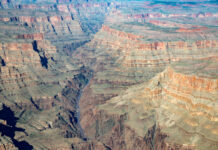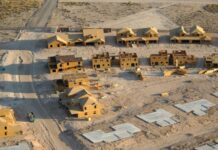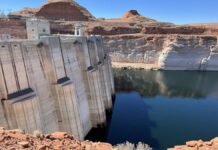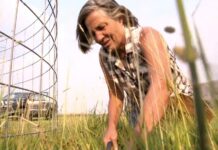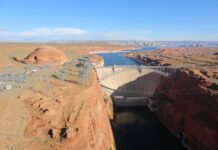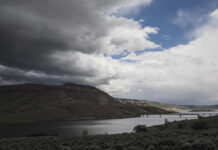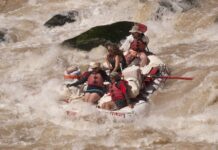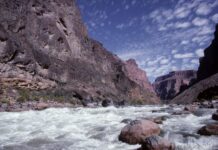Thirsty future for American West, as “megadrought” grips some of the fastest-growing U.S. cities
By Alexandra Tempus, Fair Warning
In 2002, Utah was reeling from four years of dry conditions that turned the state “into a parched tinderbox,’’ as the Associated Press reported at...
As the Salton Sea shrinks, it leaves behind a toxic reminder of the cost...
Scientists fear that eventually the toxic residue of more than a century of agricultural runoff will be blown into the air — and into the lungs of residents.
Feds: Colorado River’s Flaming Gorge Reservoir able only to deliver two more emergency water...
As drought and climate change sap the Colorado River, even the water in the Upper Basin’s high-elevation reservoirs isn’t enough to protect the larger system.
Report: Colorado River ranch water savings hit 42 percent
Colorado’s high altitude hay meadows could be re-operated to yield more than 40 percent in water savings, according to a new report.
New forecast: Lake Powell electricity production to drop, as officials race to boost water...
Electricity produced at Glen Canyon Dam has been cut in half by the 20-year drought.
La Niña likely to continue, intensifying drought, wildfires; snowpack hits 91% of average
Colorado's drought may continue into the fall, bringing a third year of below-average snowpack and streamflows and high wildfire danger.
Harvesting water in arid lands – Water Buffs Podcast ep. 11 – Brad Lancaster
Brad Lancaster, author and expert on water harvesting, explains how to make the most of rainfall and greywater to stretch local supplies.
Colorado River Econ 101
By Kurt Repanshek, National Parks Traveler
From the high country in Rocky Mountain National Park a muddy flush of water rushes downstream, through western Colorado. It turns left, going south...
Traveler Special Report: Grand Canyon’s Struggling River
Glen Canyon Dam, climate change and invasive plant species are threatening the Colorado River.



